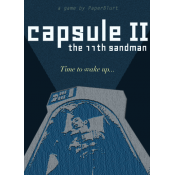Game of the Year: 80 Days
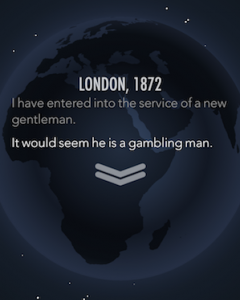
Inkle's 80 Days is a steampunk retelling of Jules Verne's Around the World in Eighty Days. Phileas Fogg has placed a bet that he can circumnavigate the world in only 80 days. He sets off with his French valet Passepartout, first crossing the Channel in a submersible train and then continuing the journey in various mechanical contraptions.
What's impressive about 80 Days is that it has a "real" game mechanic in addition to the literary side, without compromising either. You can play it strategically and ignore the prose, or read it as a story and ignore the game, or anything in between. It's easy to see why it's been succesful with so many different types of players.
It is visually gorgeous, both in its illustrations and typography; the music evokes an atmosphere of travel and adventure. The writing is sublime and only becomes awkward in the segments with canned default responses. The gameplay suits mobile gaming perfectly: it's easy to pick up and play any duration at a time.
Apparently 80 Days started out as a small side project to their Sorcery! series but the scope soon got out ouf hand. As such it's also a testament to how small side projects can grow to become something truly great.
Game of the Year first runner-up: Hearthstone
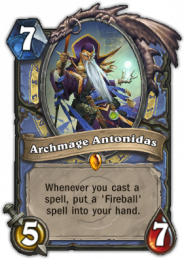
Measured by hours played this one would easily take the top spot of 2014. Hearthstone is a digital multiplayer trading card game in the style of Magic: The Gathering. The difference between Hearthstone and M:TG is that the latter is great fun played with physical cards but fails utterly as a computer game. Most of its gameplay consist of waiting for phase timers to run out which slows the tempo to a crawl.
Hearthstone however is free from baggage of the physical world. It's fast-paced and well balanced: the leveling system makes sure you always get opponents that are generally at your skill level.
Hearthstone's free-to-play system deserves a special mention. Winning matches earns you gold which you can use to buy additional cards, enter arena tournaments, and buy single-player campaigns. The prices are low enough that getting everything you need just by playing is feasible, there's no double economy where some things must be bought with special tokens that in practice cost real money, and those who do choose to spend real money aren't given an unfair edge over those who don't. People, this is how you do free-to-play right.
Game of the Year second runner-up: Hadean Lands

Andrew Plotkin's Hadean Lands is the result of a Kickstarter from five years ago. The style is unmistakably Plotkin; anyone who has enjoyed his previous games should feel right at home.
One of the more clever design decisions of Hadean Lands is how it manages to both include and subvert the difficulty level of Infocom-era IF. In the early days of adventure gaming a misstep could bring the game to a deadlock and the player was supposed to restart and replay several times to solve the puzzles. Hadean Lands also requires replaying but with "soft" restarts that keep information from previous playthroughs.
Book of the Year: S.
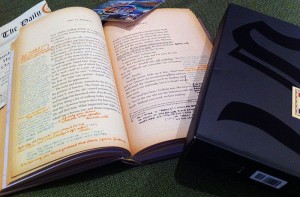
S. is written by Doug Dorst and J. J. Abrams, the latter being better known from his TV and movie work.
S. comes in a package that contains a book titled Ship of Theseus by "V. M. Straka". In the book's margins two college students have written correspondence to each other. In addition to these scribblings, between the pages there are newspaper clippings, letters, pages from notebooks, postcards and other "feelies". S. is not the book itself but the entirety of these three elements (the book, the footnotes and the feelies).
The "found footage" angle brings a whole new dimension to the reading experience. It's not possible to read S. like you would normally read a book (unless you purposefully ignore everything except the printed text of Ship of Theseus) which makes it kind of hard to place on the static <–> interactive continuum.
(Technically S. was published in 2013, but that's close enough.)
Movie of the Year: Interstellar

Interstellar is Christopher Nolan's sci-fi film about humanity's search of a new home when plant diseases are about to destroy Earth's capability to grow food.
Typical of Nolan's work the film takes one or two themes and builds everything else around them. What the theme is is always debatable but to me it was loneliness: personal loneliness and the loneliness of humans as a species. Also, a constantly recurring motif to look for: rotation and rotating things.
The movie is evocative and thought-provoking; I only wish that they had toned down the "power of love" angle a bit. In many ways it's the modern 2001: A Space Odyssey.
Blog of the Year: These Heterogenous Tasks

Sam Kabo Ashwell reviews various IF and almost-IF games at These Heterogenous Tasks.
The reviews are exceptional in that Sam not only reviews the games as they are but sees them in a wider perspective in game and narrative design. Often he uses the game in question only as a lens through which to inspect the bigger picture or a common trope in all game design.
This approach is both interesting to the reader and fair to the reviewed game. No-one and nothing exists in a vacuum, which is something that's easily forgotten. By placing the design decisions in context the discussion shifts away from picking on an individual designer's choices and towards a more general inspection of what works and what doesn't.
Competition of the Year: 20th Annual Interactive Fiction Competition

The torch for organizing the Interactive Fiction Competition was passed to Jason McIntosh who not only took the responsibility but completely revised the web site and started to modernize the entire competition. The quantity and quality of entries went up and the event attracted a good amount of attention and reviews.
IFComp once eclipsed everything else that was happening in the IF world; now it's still the main event but the focus has evened out to other events and splinter communities. With the reformations taking place there's still a good chance that IFComp has value in the future as well.
Collaboration of the Year: ESA comet lander

The European Space Agency ESA's Rosetta spacecraft reached the comet 67P, and sent the Philae lander to its surface. Rosetta became the first spacecraft to orbit a comet, and Philae the first man-made object to land softly (as opposed to just crashing) on one.
While the mission is a technological marvel, it's also a collaboration of 20 European nations. That's 20 countries and cultures working together towards a common goal – an example to humanity that must ultimately learn to do the same in many other things.
The year 2014 saw some excellent content, the ones above and much more that could have been mentioned. Now we'll move on to 2015 and perhaps to even bigger and better things.
 Seeking Ataraxia is a choice-based game that describes a couple of ordinary days in the life of a university student who suffers from OCD and anxiety.
Seeking Ataraxia is a choice-based game that describes a couple of ordinary days in the life of a university student who suffers from OCD and anxiety. 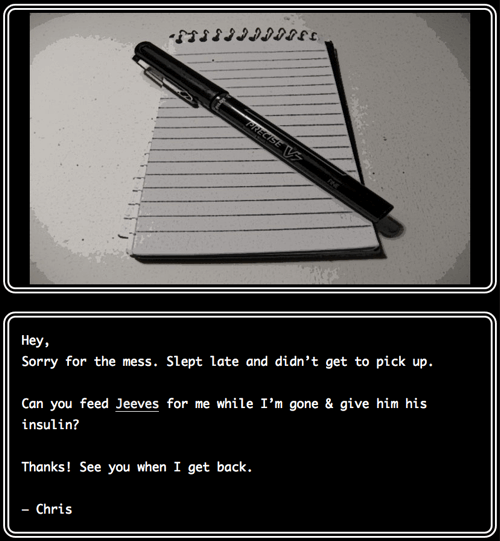
 Birdland
Birdland Forever Meow
Forever Meow The Problems Compound
The Problems Compound